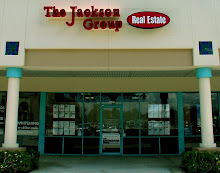Zombie foreclosure statistics scary
Mary Umberger On Real Estate Recent Columns
This is how hot this "zombie" thing has become in our culture — they've sleepwalked their way off the TV screen and into the real estate market.
Well, sort of. I refer to the phenomenon of zombie foreclosures, which are homes that, like their pop culture namesakes, aren't exactly alive — but they're not dead either.
In a zombie foreclosure, the owner has gotten a foreclosure notice and subsequently packed up and moved, apparently thinking it's over — the banks will finish the job. But many banks, for various reasons, haven't followed through with the rest of the process, and the homes languish in the absent homeowners' names.
And the homeowners, sometimes years later, find out they're still on the hook for property taxes.
There are about 302,000 "zombies," according to RealtyTrac, a housing data company that studies foreclosure activity.
In an edited interview, RealtyTrac Vice President Daren Blomquist discussed how zombie foreclosures affect their communities (and, belatedly, their former owners), and where we seem to stand, as a nation, in our efforts to put the foreclosure horror show behind us:
Q: The "zombie" term is media-catchy and seems rather apt — did your company coin it? And why did you count them?
A: We can't claim credit. The term came about from news organizations looking for data because they were studying the phenomenon of homeowners who thought they had lost a home to foreclosure, but, maybe years afterward, they've started getting property tax and other bills related to owning that home, and they find out the house has never been foreclosed upon, even though they had left.
So the home sits there; it's vacant and possibly the lawn isn't being mowed, other obvious signs of neglect are there, and it's dragging down the value of the neighborhood.
Q: Why haven't the banks followed through with the foreclosures?
A: There are a couple of reasons. It's a side effect of the increasingly lengthy foreclosure process. It just takes longer for banks to foreclose these days, in general.
Secondly, there are situations where the banks intentionally decide it's not in their financial interest to follow through with the foreclosure, even after they've started the process, because of the holding costs. That's a big factor, and in lots of cities now you have them cracking down on the banks and imposing fines if the banks' homes aren't maintained properly.
Q: How did you come up with approximately 302,000 in this condition?
A: We cross-referenced addresses of homes in the foreclosure process in the first quarter of the year with vacant-property data from the Postal Service.
It's a conservative estimate — for one thing, we didn't count properties that are actually in bank-owned status, where the foreclosure has been completed. And in Florida, for instance, we didn't count properties that had been in foreclosure longer than the state average of 853 days and for which there hadn't been any recent foreclosure activity.
Nationwide, we found that 35 percent of all properties in the foreclosure process were flagged as vacant or were identified as a situation where the homeowner in foreclosure had moved out. In some states, the percentage was 50 percent or higher — Indiana, Oregon, Washington and Nevada.
Florida led the nation, with about 91,000 zombies. Coming in a distant second was Illinois, with 31,668, and third was California, with 28,821.
I was surprised at how high that 35 percent number was, honestly — over a third of all homes in the foreclosure process.
Because this is the first time such a study has been done, there's no data to compare it with. And one problem with the data is that the Postal Service numbers don't have a time stamp to show when the property was vacated — it just shows that either it is or it's not occupied.
Q: Are you going to continue to study the zombies?
A: We haven't planned that far ahead at this point. I think we would start looking at it on a quarterly basis, and maybe we would look at other factors, to see the types of properties that are vacant.
My suspicion is that the older, smaller properties are the zombies because right now there are so many institutional investors buying up hundreds of foreclosure homes to rehab and turn into rentals, and they're less attracted to the older ones — even homes built before 1990 might be considered "older" to these investors because they want homes that are newer and aren't going to require a ton of maintenance. Those newer properties aren't getting as much of an opportunity to become zombies because there are ready buyers for them.
Q: What's your take on where the country stands on the foreclosure situation in general?
A: There are signs of recovery but there are still cracks in the foundation of the recovery — and one of those is these delayed and deferred foreclosures that are finally coming through the legal pipeline. Many markets still need to deal with these.
In our first-quarter analysis, we found 1.5 million U.S. properties actively in the process or bank-owned. That's up 9 percent from the first quarter of last year, but still down 32 percent from the peak of 2.2 million foreclosure properties in December 2010.
And we still had 10.9 million homes underwater in January, but at least that's improving from the 12.5 million at the beginning of 2012. Part of that is because property values are rising in some areas, and lifting many homeowners out of negative equity.
The housing crisis has been successfully contained, but I don't think we're seeing a recovery that's robust and fundamentally sound.







No comments:
Post a Comment
Note: Only a member of this blog may post a comment.